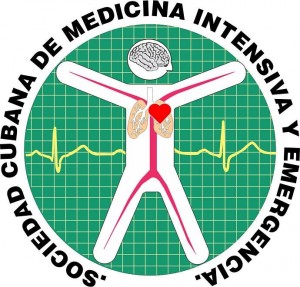Comportamiento de la ventilación mecánica en una terapia intensiva pediátrica / Behaviour of mechanical ventilation in a paediatric intensive care
Palabras clave:
Ventilación mecánica, Complicaciones, Supervivencia / Mechanical ventilation, Complications, SurvivalResumen
Introducción: la ventilación mecánica es el proceso por el cual se realiza el movimiento de gas hacia y desde los pulmones por un equipo externo conectado directamente al paciente.
Objetivo: describir el comportamiento de variables clínicas en los pacientes que necesitaron ventilación mecánica.
Metodología: se realizó un estudio retrospectivo en pacientes ingresados en la Unidad de Cuidados Intensivos Pediátrico del Hospital Provincial Docente “Eliseo Noel Caamaño” de Matanzas en el año 2014, el universo estuvo constituido por 232 pacientes ingresados en el servicio y la muestra fueron 36 niños que necesitaron ventilación mecánica, se utilizaron como fuentes de información las historias clínicas y el libro de registro de la sala. Los datos obtenidos fueron organizados y tabulados manualmente y presentados en tablas, se utilizaron frecuencias absolutas y relativas mediante valores porcentuales.
Resultados: el 15,5 % de los niños ingresados recibieron ventilación mecánica, los menores de un año con 33,4 % y del sexo masculino para un 55,5 % fueron los más ventilados, procedieron el 83,3 % del cuerpo de guardia, solamente 6 casos (16,7%) fueron clasificados como de alto riesgo de fallecer según escala de PRISM; la morbilidad que más se ventiló fueron las afecciones respiratorias con 25 %, la atelectasia fue la principal complicación (37 %), recibieron tratamiento ventilatorio por más de 48 horas el 61,2 %; fallecieron el 27,8 % de los pacientes ventilados.
Conclusiones:el tratamiento ventilatorio fue mayor de 48 horas, egresando vivos el mayor por ciento de pacientes.
Abstract
Introduction: mechanical ventilation is the process which allows the gas movement to and from the lungs through external equipment connected to the patient directly.
Objective: to describe the behaviour of clinic variables in patients who need mechanical ventilation.
Methodology: a retrospective trial in patients admitted at the Paediatric Intensive Care Unit of the Teaching Hospital “Eliseo Noel Caamaño” in Matanzas during the year 2014 was carried out, 232 patients admitted to the service were universe of this trial and 36 children who needed mechanical ventilation were the sample, the sources of information were both the medical records and the register book of the service. Data were organized and tabulated manually and presented graphically by tables, absolute and relative frequencies were used by percentages.
Results: 15.5% of children admitted received mechanical ventilation, 33.4% infants less than one year old and 55.5% males were the most ventilated patients, 83.3% were admitted of the emergency room, only 6 cases (16,7 %) were classified as high dying risk based on the PRIMS (Probability Risk Infant Score Mortality). The mostly ventilated cases were the respiratory diseases with 25 %, the principal complication was atelectasis with a 37 %, 61.2% of the patients received mechanical ventilation treatment for more than 48 hours and 27.8% of the ventilated patients died.
Conclusions: treatment with mechanical ventilation was for more than 48 hours, discharged alive the highest percentage of ventilated patients.
Descargas
Citas
1. Muñoz B. Conceptos de ventilación mecánica. Unidad de Cuidados Intensivos Pediátricos. Hospital Clínico de Valencia. España 2008.
2. Vicent JL. Evidence-Based Medicine in the ICU. Important Advances and Limitations. Chest. 2004 126(2), 592-600.
3..Arencibia Sosa Heriberto, Mathador Naurah Esther, Lobaina Lafita José Luis, Sánchez Guillaume Jorge. Características clínicas de las neumonías asociadas a la ventilación en cuidados intensivos pediátricos. MEDISAN [Internet]. 2012 Nov [citado 2016 Abr 30] ; 16( 11 ): 1690-1697. Disponible en: http://scielo.sld.cu/scielo.php?script=sci_arttext&pid=S1029-30192012001100005&lng=es.
4. Balcells-Ramírez, López-Herce C, Modesto-Alapont. Asociación Española de pediatría “Prevalencia de la ventilación mecánica en las unidades de cuidados intensivos pediátricos en España” Hospital General Universitario Gregorio Marañón. Madrid. España. Año 2006.
5. López - Herce J. Ventilación mecánica en pediatría. Conceptos Generales. An. Pedaitric 2003; 59: p. 59-60.
6. Wolfler A, Calderoni E, Ottonello G, Conti G, et al. Daily practice of mechanical ventilation in Italian pediatric intensive care units: a prospective survey. Pediatr Crit Care Med 2011;12(2):141-6. [ Links ]
7. Farias JA, Fernández A, Monteverde E, Flores JC, et al. Mechanical ventilation in pediatric intensive care units during the season for acute lower respiratory infection: a multicenter study. Pediatr Crit Care Med 2012;13 (2):158-64. [ Links ]
8. Reina C, López-Herce J. Complicaciones de la ventilación mecánica. An Pediatr (Barc)2003; 59: 160-5.
9. Bernard GR, Artigas A, Brigham KL, Carlet J, Falke K, Hudson L, et al. Definitios, mechanisms, relevant outcomes and clinical trial coordination Intensive Care Med 1994; 20: 225-32.
10. N, Ricard JD, Saumon G, Dreyfuss D. Ventilator-induced lung injury: historical perspectives and clinical implications. Ann Intensive Care 2011;1 (1):28.
11. Reina Farragut CM. Ventilación mecánica controlada. An Pediatric (Barc); 2003: 59: 82-5.
12. León Román CA. Enfermería en urgencias. La Habana: Editorial Ciencias Medicas, 2008.
13. Klamburg J: Morbilidad y mortalidad en la ventilación mecánica prolongada. Med Intensiva 1983; 7: 205-225.
14. Álvarez Z, Iraola M, Molina F, Barco V. Caracterización de la mortalidad en la unidad de cuidados intensivos año 1998. Rev. Cubana Med 2000, 39(4):222- 7.
15. Jiménez S, Domínguez H, Núñez JF, Gómez R. Ventilación Mecánica Artificial en una UCI Polivalente. 1998-2000. Habana.2002. Disponible en CD: ISBN 959-7164-07-8.







